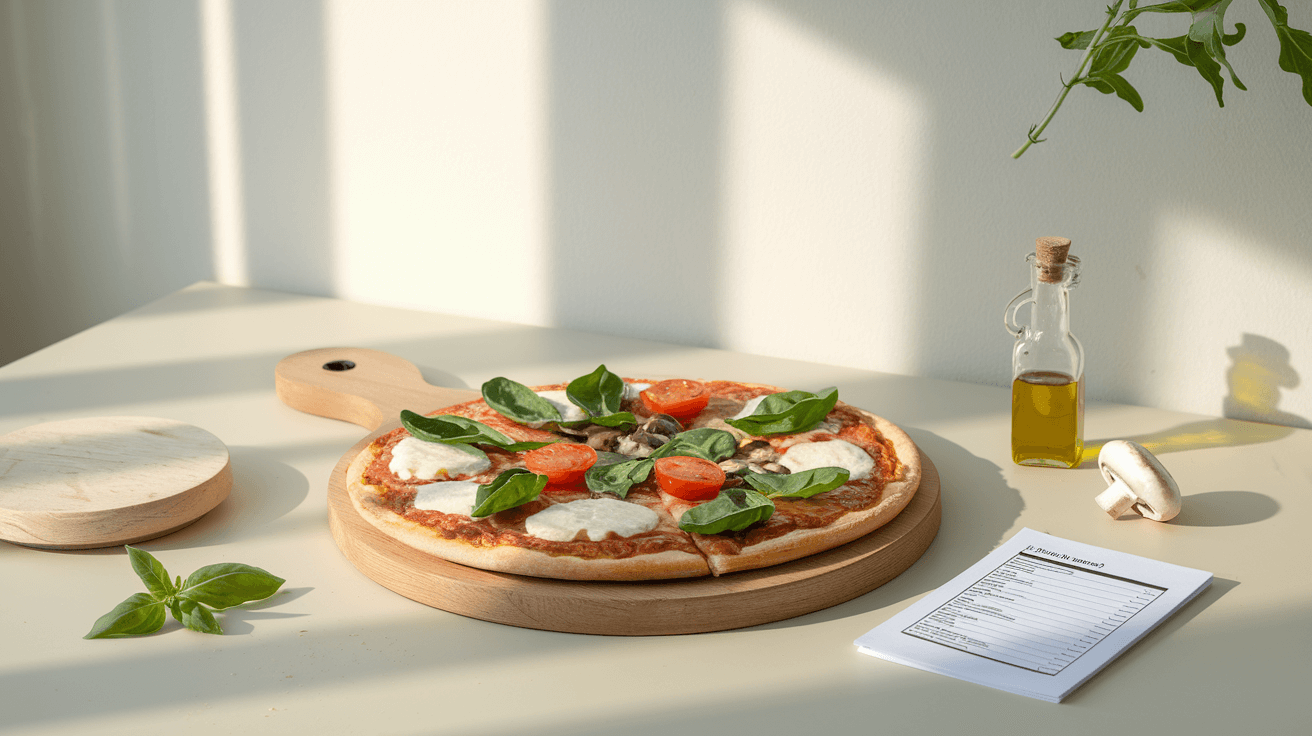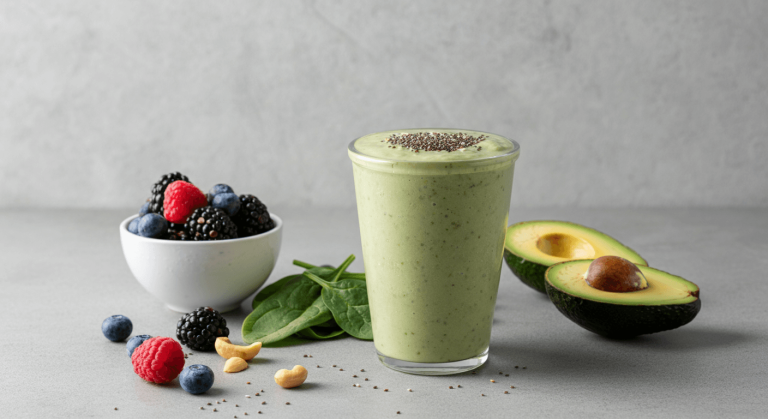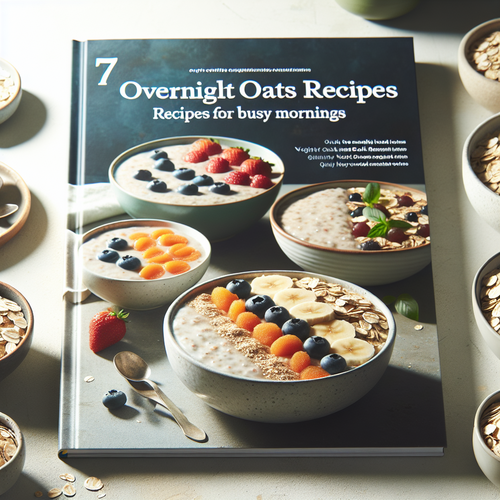The Guilt-Free Pizza Guide: Calories, Toppings, and Healthy Swaps
Do you love pizza but worry it will derail your health and fitness goals? You’re not alone. The warm, cheesy, and satisfying slice is a global favorite, but it often comes with a reputation for being a diet-wrecker. The good news is you don’t have to give it up.
This guide cuts through the confusing and incomplete information online. We’ve done the research, compared the big chains, and developed actionable strategies so you can pick up a menu or head to the grocery store with confidence. This is your definitive playbook for enjoying pizza, guilt-free. Drawing on data directly from major pizza chains and authoritative health sources like the USDA, this guide provides a comprehensive analysis you can trust. We’ll show you exactly how many calories in a slice of cheese pizza can vary and how to make the smartest choice for your body, every time.
Table of Contents
- The Foundational Breakdown: Deconstructing the Pizza Slice
- The Ultimate Pizza Chain Calorie Showdown
- The Healthy Pizza Playbook: Smart Choices for Every Occasion
- Beyond Calories: A Holistic Look at Pizza Nutrition
- Frequently Asked Questions (FAQ)
- Conclusion
The Foundational Breakdown: Deconstructing the Pizza Slice
To make informed choices, you first need to understand where the calories in pizza actually come from. A single slice is a combination of three key components, each contributing to the final nutritional profile. By establishing a baseline, you can identify the biggest levers to pull to build a healthier slice.
The Anatomy of a Calorie Count
The calorie count of a pizza slice is primarily determined by three variables: the crust, the cheese, and the toppings. Each element has a wide calorie range.
- The Crust: This is the foundation and often the largest source of calories, primarily from carbohydrates. A thin crust can be under 100 calories, while a thick, stuffed, or deep-dish crust can easily exceed 200 calories on its own.
- The Cheese: A moderate layer of whole-milk mozzarella adds significant fat and protein, contributing anywhere from 70 to 100 calories. Asking for “light cheese” or using part-skim mozzarella can lower this number.
- The Toppings: This is where the calorie count can either stay modest or skyrocket. Vegetables add minimal calories and beneficial fiber, while processed meats like pepperoni and sausage add substantial fat and sodium.
A standard slice of medium cheese pizza from a major chain typically falls between 220 and 300 calories. However, according to the U.S. Department of Agriculture (USDA) report on fast-food pizza nutrients, this can vary significantly based on preparation. The number of calories in a slice of cheese pizza is your baseline, while the calories in a slice of pepperoni pizza can jump by an additional 30 to 60 calories due to the fat content in the meat.
Thin Crust vs. Regular: A Head-to-Head Calorie Battle
One of the quickest ways to slash calories is by changing the crust. The difference between thin crust and regular or deep-dish options is substantial, primarily in carbohydrates and overall calories. Understanding the trade-offs allows you to make a choice that aligns with your dietary goals. Here’s a look at the thin crust pizza calories vs regular and deep-dish options, based on typical values for a medium slice.
| Crust Type | Typical Calorie Range | Typical Carbohydrate Range | Key Characteristic |
|---|---|---|---|
| Thin Crust | 180 – 250 kcal | 20 – 25g | Crispy base, lower in carbs and calories. |
| Regular/Hand-Tossed | 250 – 320 kcal | 30 – 40g | Chewy, classic texture with a moderate calorie load. |
| Deep-Dish/Pan | 310 – 400+ kcal | 40 – 50g+ | Thick, dense, and often cooked in oil, making it the highest in calories. |
Choosing a thin crust can save you up to 100 calories and 15-20 grams of carbohydrates per slice compared to a pan or deep-dish version.
The Ultimate Pizza Chain Calorie Showdown
Navigating the menus of popular pizza chains can be a challenge. To provide clarity, we’ve sourced nutritional data directly from the official websites of Domino’s, Pizza Hut, Papa John’s, and Costco. This ensures the information is accurate and allows for a direct, side-by-side comparison.
Below is a master table comparing a standard slice of medium pepperoni pizza from each chain. We’ve captured not just calories, but also fat, sodium, and protein to give you a more complete picture. The accompanying photography shows these slices side-by-side, offering a unique, first-hand look at the differences in portion size and composition.
Master Comparison Table: Medium Pepperoni Slice (1/8 of a 14″ Pizza)
| Pizza Chain | Calories | Total Fat (g) | Sodium (mg) | Protein (g) |
|---|---|---|---|---|
| Domino’s (Hand-Tossed) | 290 | 13g | 640mg | 12g |
| Pizza Hut (Hand-Tossed) | 300 | 14g | 680mg | 13g |
| Papa John’s (Original) | 300 | 12g | 710mg | 12g |
| Costco (Food Court) | 710 | 28g | 1370mg | 44g |
Note: Costco’s slice is significantly larger (1/6 of an 18″ pizza), which explains its much higher nutritional values.
Domino’s Pizza Calories
A slice of Domino’s medium hand-tossed pepperoni pizza contains 290 calories. For those looking to cut back, their Crunchy Thin Crust is a powerful tool. A slice of thin-crust cheese pizza has just 190 calories. By swapping the crust and opting for veggie toppings, you can easily create a slice under 250 calories. The dominos pizza calories slice varies greatly with their customization options, making their online nutrition calculator a useful resource.
Pizza Hut Calorie Guide
Pizza Hut’s hand-tossed pepperoni slice comes in at 300 calories. Their answer to what pizza has the least calories is their “Thin ‘N Crispy” crust. A slice of Thin ‘N Crispy Veggie Lover’s pizza, for example, is around 200 calories, making it one of the lighter choices available among the major chains. The key is to avoid the pan and stuffed crust options, which can add over 100 calories per slice.
Papa John’s Nutritional Snapshot
Papa John’s original crust pepperoni slice also lands at 300 calories. Where Papa John’s provides useful detail is in topping-specific calorie counts. For instance, adding their spicy Italian sausage adds about 40 calories per slice, while mushrooms or green peppers add fewer than 5. Being mindful of these additions is crucial for keeping your pizza on the healthier side.
Costco Pizza: A Calorie Deep Dive
Costco’s food court pizza is legendary for its size and value, but its calorie count is equally massive. A single pepperoni slice contains approximately 710 calories and a staggering 1,370 mg of sodium. This is due to its sheer size—a Costco slice is about twice the serving of a slice from other chains. While delicious, think of a Costco slice as a full meal, not a light snack.
The Healthy Pizza Playbook: Smart Choices for Every Occasion
Armed with foundational knowledge, you can now implement strategies to build a healthier pizza experience, whether you’re ordering out or getting creative in your own kitchen. This playbook empowers you with actionable tips and recipes to make pizza a regular, guilt-free part of your diet.
Universal Ordering Hacks for Low-Calorie Pizza
No matter where you order from, these simple hacks can significantly reduce the calorie, fat, and sodium content of your pizza:
- Go Thin: Always opt for the thinnest crust available.
- Ask for “Light Cheese”: Most pizzerias will happily use about half the amount of cheese, which can save 50-80 calories per slice.
- Double the Veggies: Load up on mushrooms, bell peppers, onions, spinach, and tomatoes. They add fiber, vitamins, and volume for very few calories.
- Choose Lean Protein: Swap pepperoni or sausage for grilled chicken or ham.
- Blot the Oil: Use a napkin to gently dab the top of your slice. You can blot away a surprising amount of excess oil, saving 20-40 calories.
- Skip the Dipping Sauces: Creamy garlic butter or ranch dips can add 100-250 calories per serving. Stick with marinara if you need a dip.
These low calorie pizza options create a framework for making smarter choices at any restaurant, helping you determine what pizza has the least calories on any given menu.
The Best & Worst Healthy Pizza Toppings
The toppings make the pizza, but they also make a huge difference in the final nutritional profile.
Best healthy pizza toppings low calorie:
- Mushrooms
- Green Bell Peppers
- Onions (Red or White)
- Fresh Spinach
- Tomatoes
- Jalapeños
- Pineapple
- Grilled Chicken Breast
- Black Olives
Calorie-Dense Toppings (Use Sparingly):
- Pepperoni
- Sausage
- Bacon
- Extra Cheese
- Alfredo or White Sauce
- Meatballs
How to Make Low-Calorie Pizza at Home: Two Foolproof Recipes
One of the best ways to control what goes into your pizza is to make it yourself. Learning how to make low calorie pizza at home is simple with these two delicious and easy recipes.
Recipe 1: The Whole-Wheat Margherita
This classic recipe gets a heart-healthy makeover with a whole-wheat crust and fresh ingredients. It’s packed with flavor, not guilt. You can follow the American Heart Association’s heart-healthy pizza recipe for precise measurements.
- Ingredients: Whole-wheat pizza dough, marinara sauce (no added sugar), fresh mozzarella (part-skim), fresh basil leaves, sliced Roma tomatoes, olive oil.
Instructions:
- Preheat your oven to 450°F (232°C).
- Roll out the whole-wheat dough on a lightly floured surface to your desired thickness.
- Place the dough on a pizza stone or baking sheet. Lightly brush the surface with olive oil.
- Spread a thin layer of marinara sauce over the dough, leaving a small border for the crust.
- Arrange slices of fresh mozzarella and Roma tomatoes on top.
- Bake for 10-15 minutes, or until the crust is golden and the cheese is bubbly.
- Garnish with fresh basil leaves before serving.
Approximate Nutrition (per slice): 250 calories, 10g fat, 12g protein.
Recipe 2: The Quick Tortilla Pizza
For a low-carb, lightning-fast alternative, a tortilla serves as the perfect crispy, thin crust. This healthy tortilla pizza recipe from the World Cancer Research Fund is a fan favorite.
- Ingredients: Large whole-wheat tortilla, 2-3 tablespoons of pizza sauce, shredded part-skim mozzarella cheese, your choice of finely chopped veggie toppings (like bell peppers and onions).
Instructions:
- Preheat your oven or toaster oven to 400°F (200°C).
- Place the tortilla on a baking sheet.
- Bake for 3-4 minutes until it starts to get crispy.
- Remove from the oven and spread the sauce, cheese, and toppings evenly over the tortilla.
- Return to the oven and bake for another 5-7 minutes, until the cheese is melted and the edges are brown.
Approximate Nutrition (per pizza): 300 calories, 12g fat, 15g protein.
Beyond Calories: A Holistic Look at Pizza Nutrition
While calories are a critical piece of the puzzle, a truly healthy choice considers the full nutritional profile, including macronutrients and sodium. Understanding these elements can help you build a pizza that not only fits your calorie budget but also fuels your body effectively.
Macros Matter: Finding a Balanced Slice
Macronutrients—protein, fat, and carbohydrates—are the building blocks of your diet. A typical slice of pizza is heavy on carbs and fat, and often moderate in protein.
- Carbohydrates: Mostly from the crust, providing quick energy.
- Fat: Primarily from cheese and oily meat toppings.
- Protein: Comes from cheese and meat.
To build a more balanced slice, focus on increasing protein and fiber while controlling fat. Adding lean protein like grilled chicken can turn your pizza into a more satiating meal that better supports muscle maintenance and fullness. Piling on vegetable toppings contributes fiber, which aids digestion and helps you feel full on fewer calories.
The Hidden Sodium Bomb
One of the biggest nutritional pitfalls of commercial pizza is its incredibly high sodium content. As shown in our comparison table, a single slice from a major chain can contain over 600-700 mg of sodium—nearly a third of the recommended daily limit for an adult. The USDA data on fast-food pizza reinforces this, highlighting that processed meats and sauces are major contributors. High sodium intake is linked to high blood pressure and other cardiovascular issues. To reduce sodium, opt for less processed toppings, ask for less sauce, and avoid extra salty meats like bacon and pepperoni.
Specialty Diets: Keto and Low-Carb Pizza
For those on ketogenic or low-carb diets, traditional pizza is off-limits. However, the rise of cauliflower crust and other creative alternatives has opened up a world of possibilities.
The keto pizza slice calories can vary widely based on the crust recipe and toppings. A slice of cauliflower crust pizza made with mozzarella and pepperoni typically contains:
- Calories: 150-250 kcal
- Net Carbs: 4-7g
- Fat: 10-18g
- Protein: 10-15g
Many brands now offer frozen cauliflower crust pizzas, and some pizzerias have added them to their menus. These options allow you to enjoy the pizza experience while staying within your strict carbohydrate limits.
Frequently Asked Questions (FAQ)
Q1: How many calories are in a slice of pepperoni pizza?
A: A typical slice of medium pepperoni pizza from a major chain like Domino’s or Pizza Hut contains between 290 and 320 calories. The exact number depends on the crust thickness, the amount of cheese, and the brand.
Q2: What pizza has the least calories?
A: Generally, a thin-crust pizza with light cheese and loaded with vegetable toppings will have the least calories. From the major chains, options like Domino’s Crunchy Thin Crust or Pizza Hut’s Thin ‘N Crispy can be built into a slice with around 200 calories.
Q3: Is thin crust pizza actually healthier?
A: Yes, in most cases. A thin crust significantly reduces the total calories and carbohydrates compared to regular, pan, or deep-dish crusts. By saving 50-100 calories on the base, you have more room in your budget for flavorful, nutritious toppings.
Conclusion
Pizza can absolutely be part of a healthy, balanced diet. The fear that a single slice will ruin your progress is a myth. The key is knowledge—understanding that the primary calorie drivers are the crust and toppings, knowing how to compare options at major chains, and using smart ordering hacks or homemade recipes to take control.
You now have a complete playbook to make informed, guilt-free pizza choices. You can confidently navigate any menu or grocery aisle, armed with the data and strategies needed to build a slice that is both delicious and aligned with your health goals. Ready to put this to the test? Try one of our healthy homemade pizza recipes this week and see how delicious and satisfying a low-calorie pizza can be.








